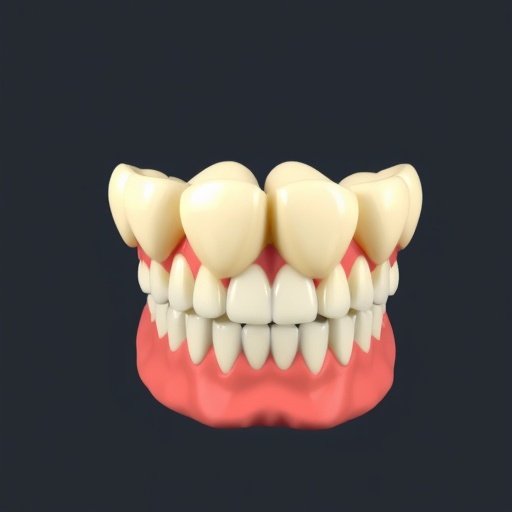The science of dental age estimation has long been a cornerstone in forensic investigations, providing critical insights into the identification and age determination of individuals. A groundbreaking study recently published in the International Journal of Legal Medicine is reshaping the understanding of subjectivity in this specialized field, particularly focusing on the reliability of observer assessments when evaluating third molar development. This innovative research not only challenges prevailing assumptions but also highlights the complexity and intricacies inherent in forensic age estimation methods.
At the heart of this scientific inquiry lies the persistent issue of subjectivity. While dental age estimation methods are generally considered robust, variations in interpretation between observers—both within the same examiner over time and among different examiners—pose significant challenges. The study delves into this problem by closely examining intra-observer and inter-observer reliability across four established third molar evaluation techniques, shedding light on the consistency and accuracy of these methods under real-world conditions.
Third molars, commonly known as wisdom teeth, have been a focal point in forensic age determination due to their late development during adolescence and early adulthood. These teeth exhibit well-defined developmental stages that correspond closely with chronological age, making them invaluable when birth records are unavailable or in dispute. However, the morphological nuances and overlapping developmental stages mean that their evaluation can often be subjective, influencing age estimations in legal and clinical contexts.
The research team employed a rigorous methodological approach to assess subjectivity implications comprehensively. By systematically comparing assessments made by multiple observers on the same set of dental radiographs, both at different points in time and across examiners, they quantified consistency levels using advanced statistical tools. Their findings reveal intriguing patterns: while some methods demonstrated relatively high repeatability within examiners, inter-examiner variability remained a significant source of inconsistency, challenging the fidelity of age estimation in forensic practice.
This variance between observers can have profound implications beyond academic interest. In forensic investigations, a misestimated age could potentially alter judicial outcomes, impact asylum proceedings, or affect the identification of missing persons. Understanding the exact degree of observer subjectivity is therefore essential for refining age estimation protocols, ensuring both scientific rigor and legal fairness.
One of the pivotal aspects the study addresses is the necessity of standardized training and calibration among forensic practitioners. The authors argue that without uniform criteria and consistent application of scoring systems, results will inevitably differ, adversely affecting reliability. Their data suggest that increasing the standardization of training modules and employing consensus-building approaches could substantially mitigate inter-observer discrepancies.
Moreover, the study contrasts the four widely utilized evaluation methods, revealing nuanced differences in how each approach handles observer variability. Some methodologies tended to yield higher agreement rates, suggesting that they might offer more objective or clearer developmental criteria. These insights prompt a reconsideration of which tools are best suited for forensic application, potentially guiding a future shift toward methods that optimize reliability and minimize subjective influence.
Technological advancements, such as digital imaging and machine learning, are briefly discussed as promising avenues to enhance consistency in dental age assessments. Automated image analysis tools could, in theory, reduce human error and bias, enabling standardized scoring of developmental stages. However, the authors caution that these technologies must be carefully validated and integrated into forensic workflows to avoid merely transferring subjectivity from human observers to algorithmic models.
The ethical dimensions of dental age estimation practices also emerge in this discourse. Given the potential consequences for individuals, particularly minors involved in legal processes, the imperative for accuracy and transparency cannot be overstated. The study underscores a need for forensic experts to communicate the inherent uncertainties in age estimations effectively, fostering informed decision-making among legal authorities and safeguarding the rights of subjects.
In light of these findings, the paper advocates for an interdisciplinary approach, bringing together dentists, forensic scientists, statisticians, and legal professionals to collaboratively refine dental age estimation frameworks. Such cooperation would facilitate the development of guidelines that balance scientific precision with practical applicability, ultimately elevating the credibility of forensic age assessments.
Furthermore, the researchers emphasize the importance of ongoing empirical validation of age estimation methods across diverse populations. Variations in genetic background, nutrition, and environmental factors can influence tooth development, which means that standard methods calibrated on one demographic may not universally apply. Recognizing these biological variables is crucial to prevent systemic biases that could perpetuate inaccuracies or injustices.
The study’s implications extend into forensic education, where curricula must evolve to incorporate knowledge of subjectivity and reliability issues in dental age estimation. Future forensic practitioners should be equipped not only with technical skills but also with a critical understanding of methodological limitations and interpretative challenges.
To summarize, this rigorous investigation into observer subjectivity in third molar evaluation methods marks a significant stride in forensic medicine. By meticulously analyzing intra- and inter-observer reliability, the researchers illuminate the complex interplay between human judgment and methodological design. Their work provides a foundation for improved training, method selection, and technology integration, paving the way toward more objective, transparent, and trustworthy dental age estimation practices in forensic contexts.
As the forensic community absorbs these findings, ongoing dialogue and innovation remain paramount. With the continued convergence of scientific insight and technological progress, the future of dental age estimation holds promise for greater accuracy and fairness—elements essential for upholding justice and dignity in the sensitive realm of age determination.
Subject of Research:
Assessment of subjectivity and reliability in dental age estimation techniques, focusing on intra- and inter-observer consistency in third molar evaluation methods.
Article Title:
Assessing subjectivity in dental age estimation: intra- and inter-observer reliability across four well established third molar evaluation methods.
Article References:
Angelakopoulos, N., Merdietio Boedi, R., Franco, A. et al. Assessing subjectivity in dental age estimation: intra- and inter-observer reliability across four well established third molar evaluation methods. Int J Legal Med (2025). https://doi.org/10.1007/s00414-025-03616-w
Image Credits: AI Generated




